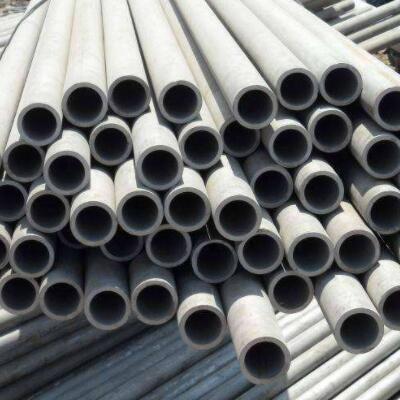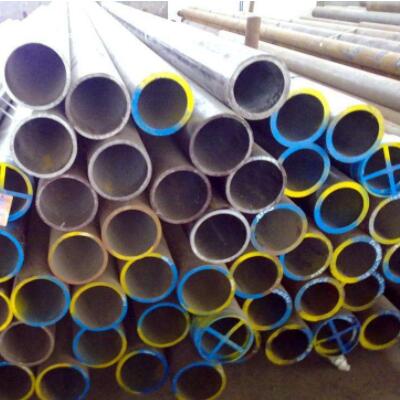Stainless steel pipe is primarily used in piping systems for the transport of fluids or gases. We manufacture steel pipe from a steel alloy containing nickel as well as chromium, which give stainless steel its corrosion-resistant properties. Stainless steel pipe resists oxidation, making it a low-maintenance solution that is suitable for high temperature and chemical applications. Because it is easily cleaned and sanitized, stainless steel pipe is also desired for applications involving food, beverages, and pharmaceutical applications.
Stainless steel pipe is commonly manufactured using a welding process or extrusion. The welding process involves shaping steel into a pipe shape and then welding the seams together to hold the shape. Extrusion creates a seamless product and involves heating a steel rod and then piercing it through the middle to create a pipe.
The term “pipe” and “tube” are often used to describe the same product, but it is important to know the difference. Though they share the same cylindrical shape, steel pipes are measured by the interior diameter (ID), whereas steel tubes are measured by the outside diameter (OD) and wall thickness. Another difference is that pipes are used to transport fluids and gases, while tubes are used to build parts or structural components.
Require Quotation? Send E-mail to : [email protected]

Stainless Steel Pipes Provide Long-Lasting Durability and Corrosion Resistance
Yingke provides stainless steel pipe that is welded and manufactured to ASTM A-312 and ASME SA-312 and are offered in 304/L and 316/L grades of steel. We generally make our welded stainless pipe in sizes ranging from 1/8″ nominal to 24″ nominal. We also provide seamless stainless steel pipe manufactured to ASTM A-312 and offered in both 304/L and 316L grades of steel. The nominal size range for our seamless stainless pipes typically ranges from 1/8″ – 8″.
Some of the common applications for stainless steel pipe include:
- Food processing
- Textile operations
- Breweries
- Water treatment plants
- Oil and gas processing
- Fertilizers and pesticides
- Chemical applications
- Construction
- Pharmaceuticals
- Automotive components
We provide stainless pipe in a range of sizes to meet your application requirements. Contact us today for more information.
What Is the Difference Between 304 Stainless Steel And 316 Stainless Steel?
300 series grade stainless steel is a chromium-nickel alloy that is manufactured into a range of products including stainless steel tubes and steel pipes. Both 304 and 316 steel pipe is durable enough to maintain its strength at high temperatures, resist corrosion, and is easy to maintain. The choice between material is highly dependent upon how you will use the pipe and the environment in which the pipe will be installed.
Type 304 stainless steel is perhaps the most common type used because it is corrosion-resistant and easy to sanitize. This type of steel is often used for food and beverage applications or in building applications.
Type 316 stainless steel is also corrosion-resistant and easy to clean but is more resistant to corrosion resulting from chemicals and solvents. Because of this, 316 stainless steel is preferred for industrial and surgical applications, or outdoor or marine applications due to its resistance to chloride corrosion.
Stainless Steel Pipes Provide a Range of Benefits for Your Application
Stainless steel is a highly versatile material that can be used for a wide range of indoor and outdoor applications. Using stainless materials for your pipe project provides several advantages, including:
- Lightweight
- Durable
- Long-lasting
- Handles high flow rates
- Easy to machine
- Scratch resistant
- Easy to sanitize
- Low-maintenance
- Superior corrosion resistance
- Recyclable, environmentally-friendly material




